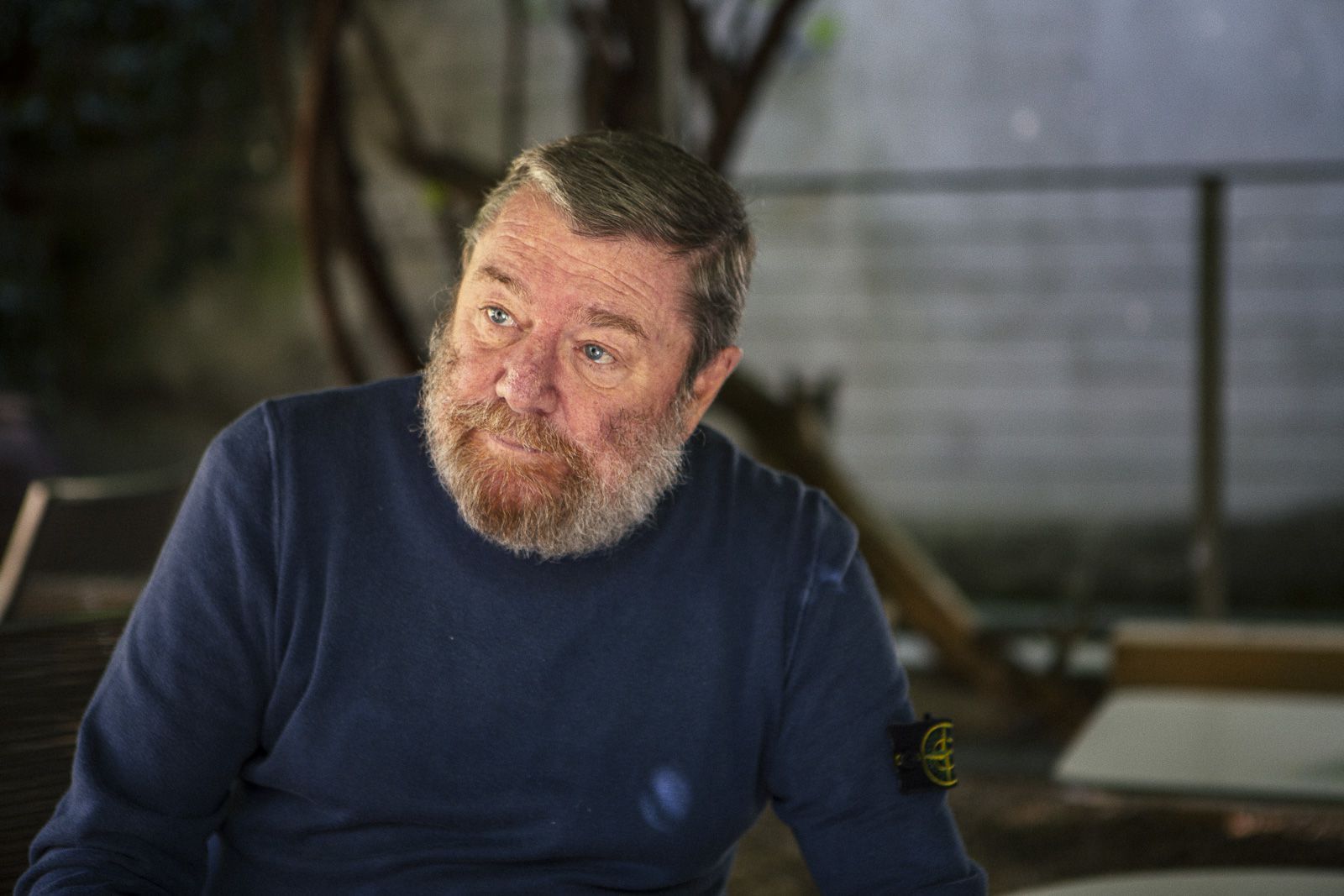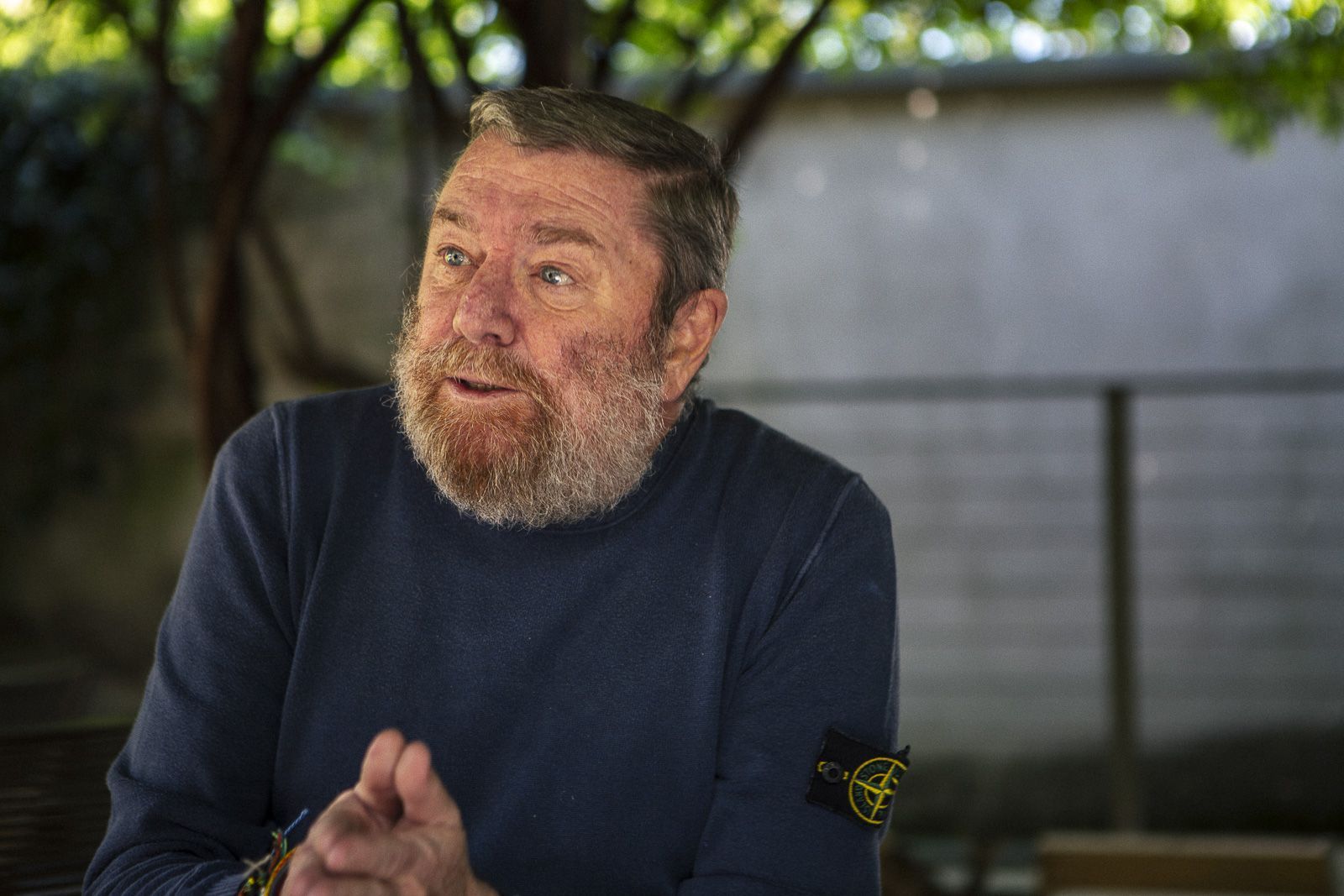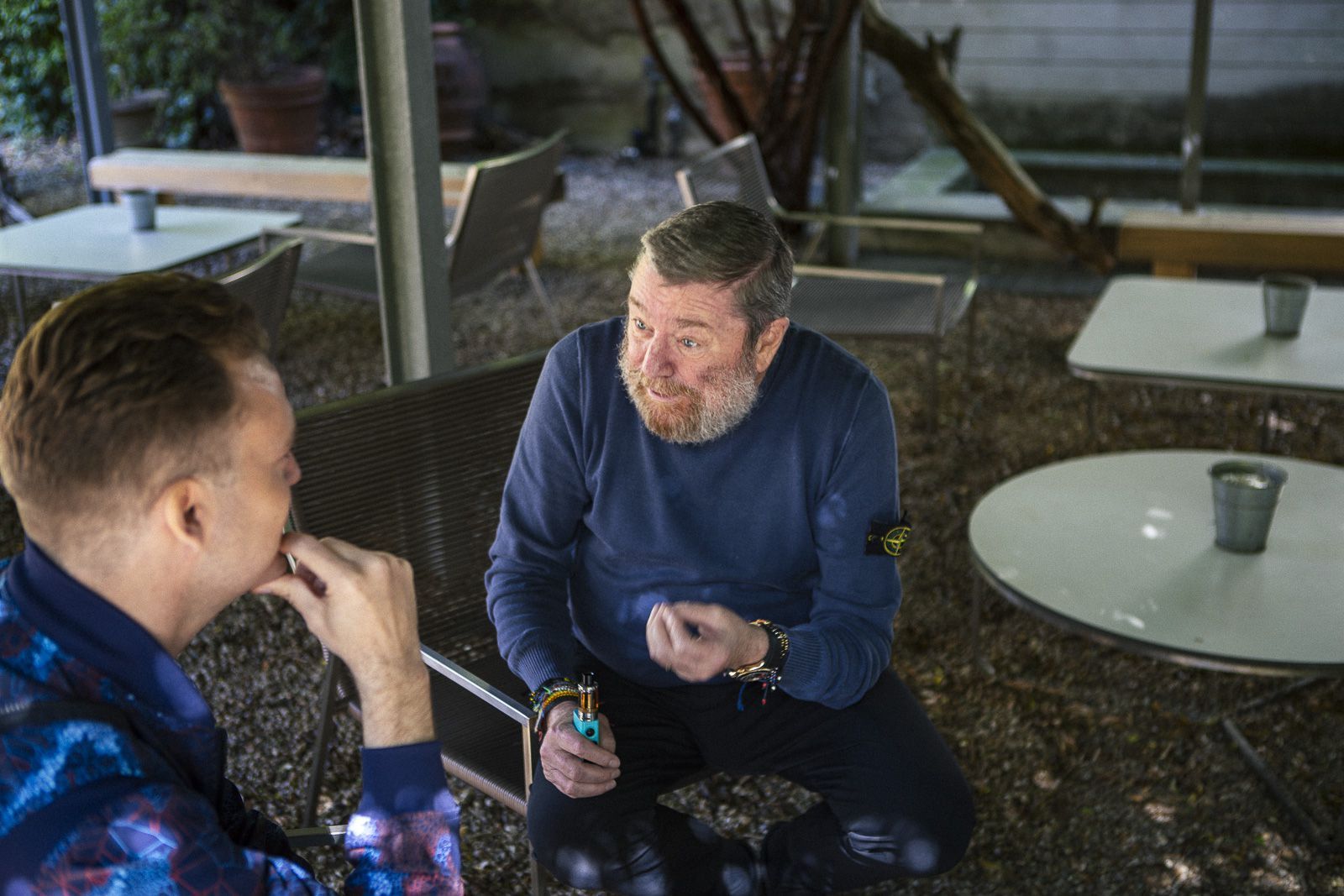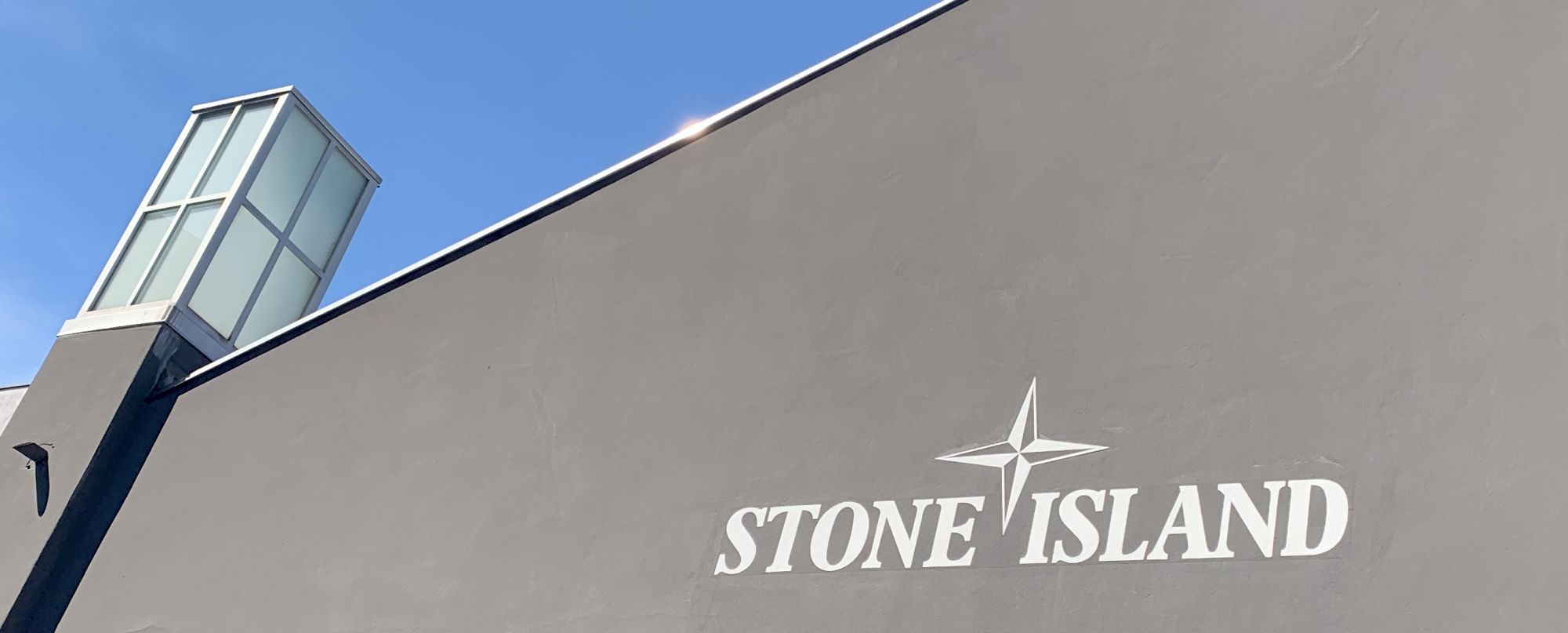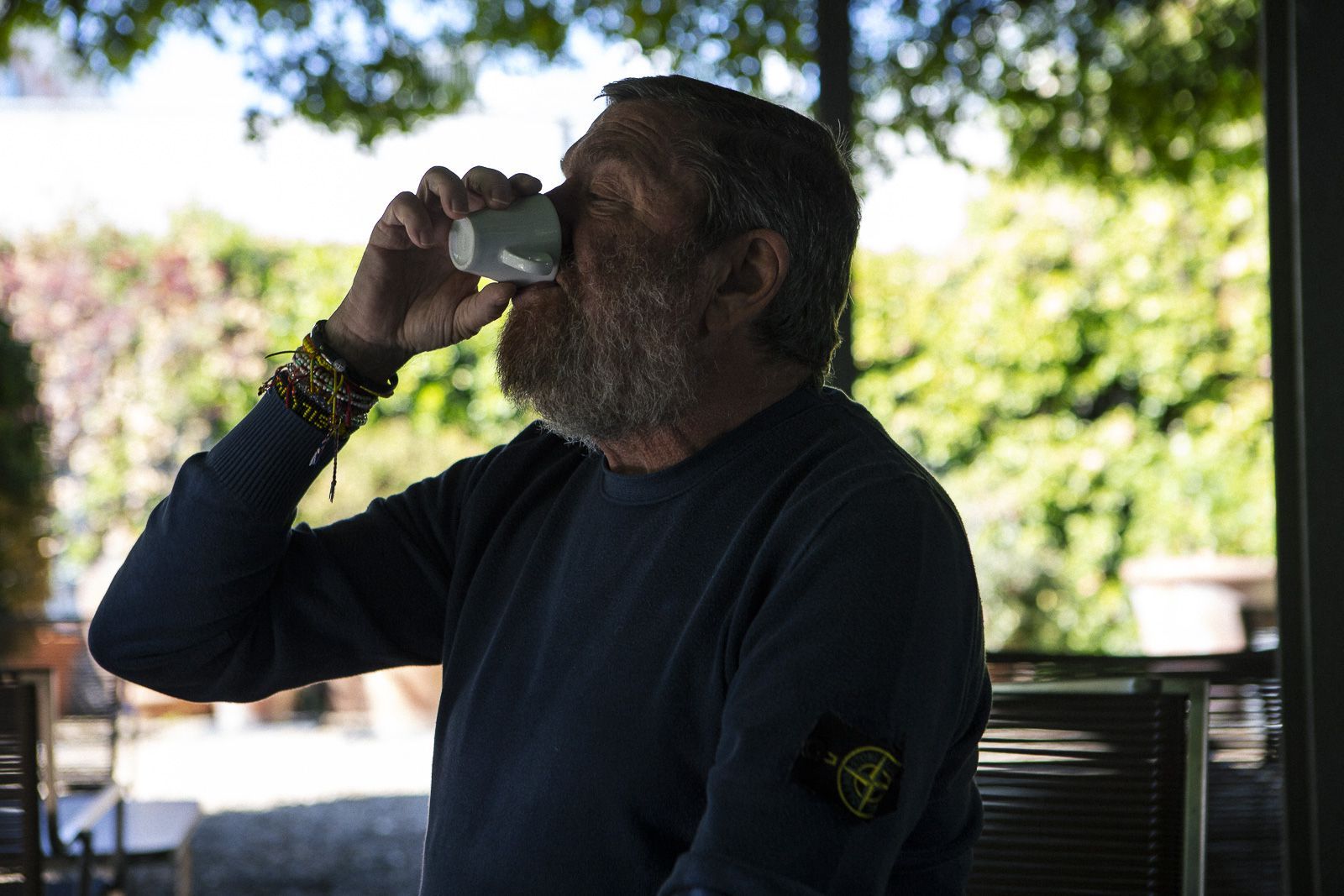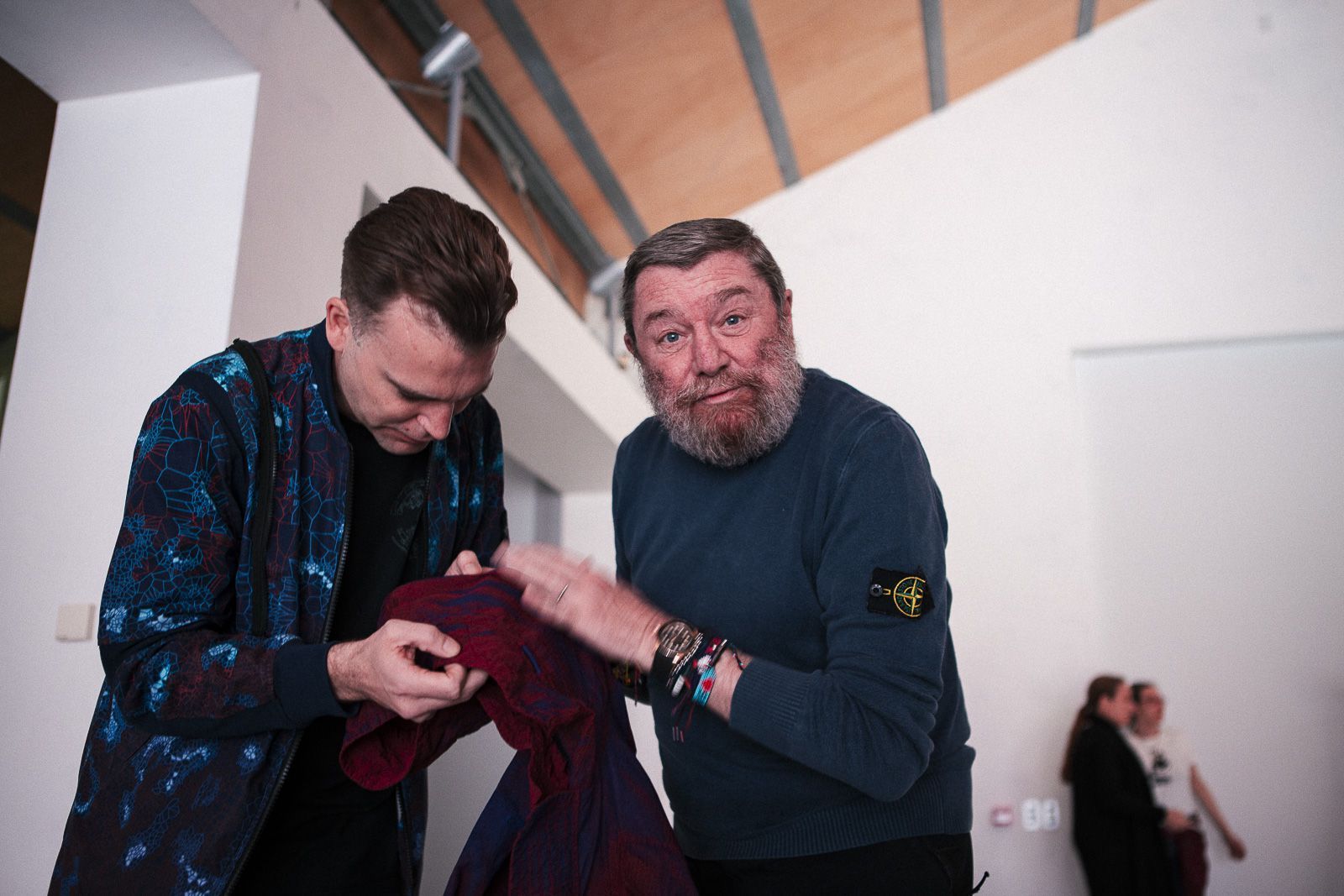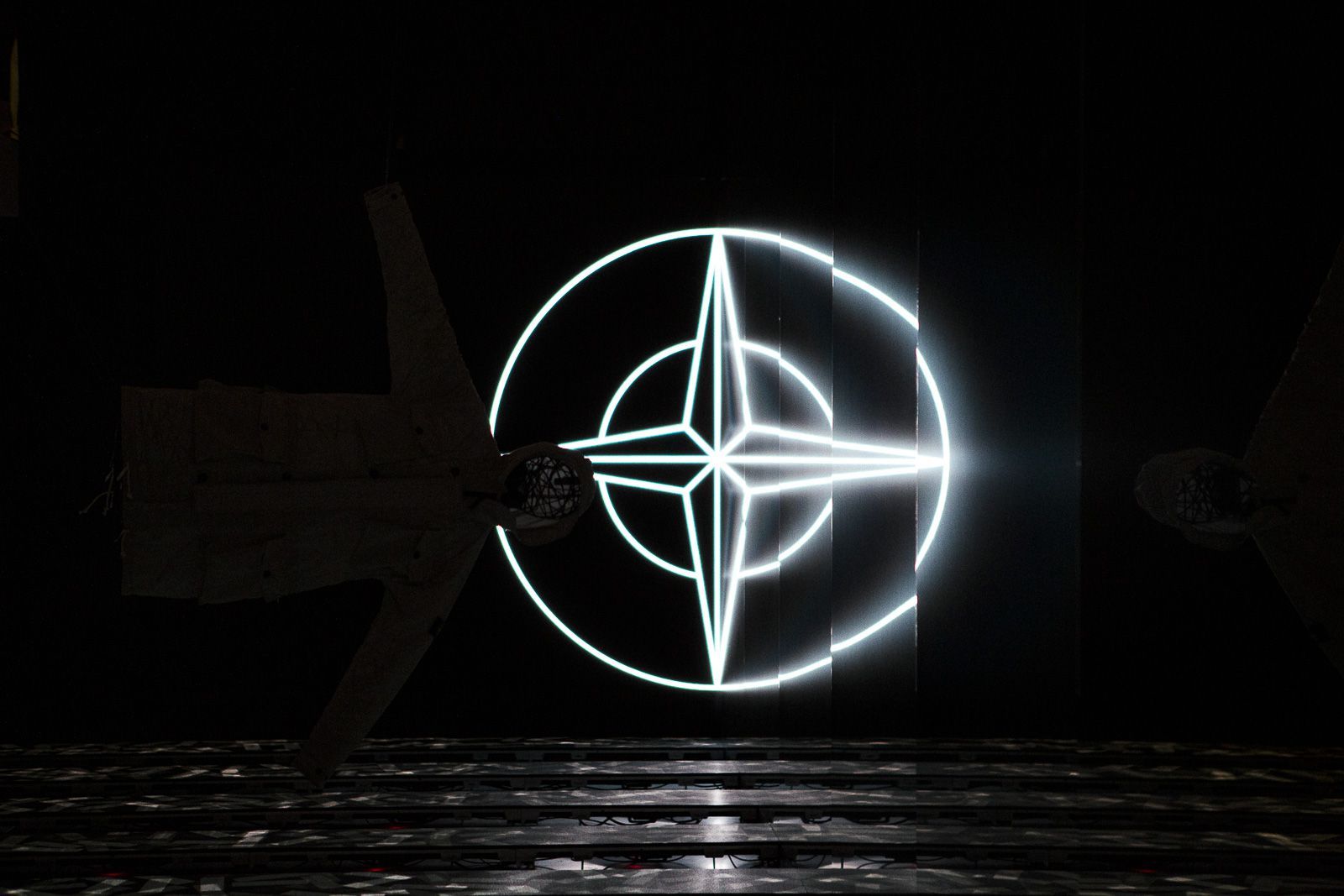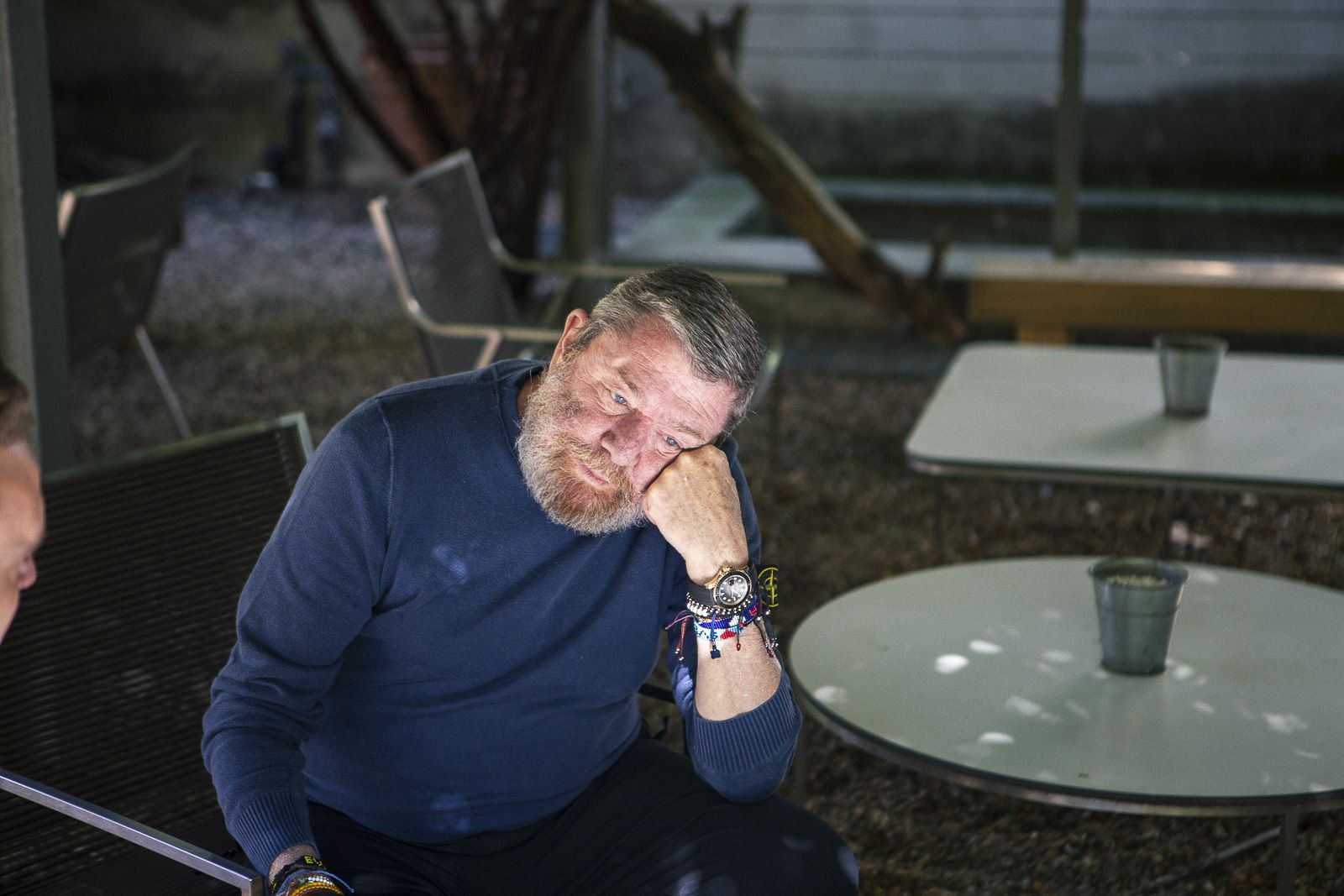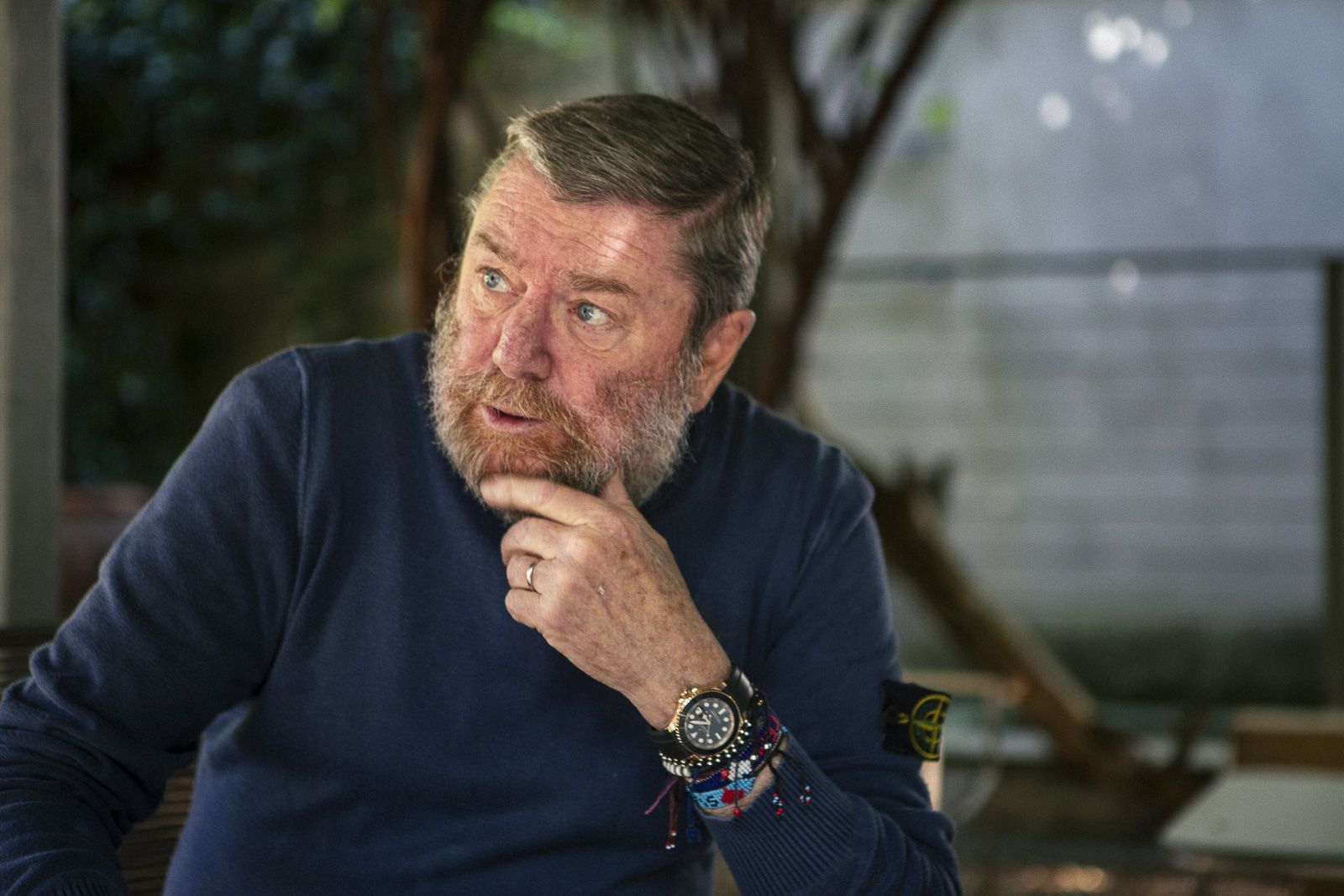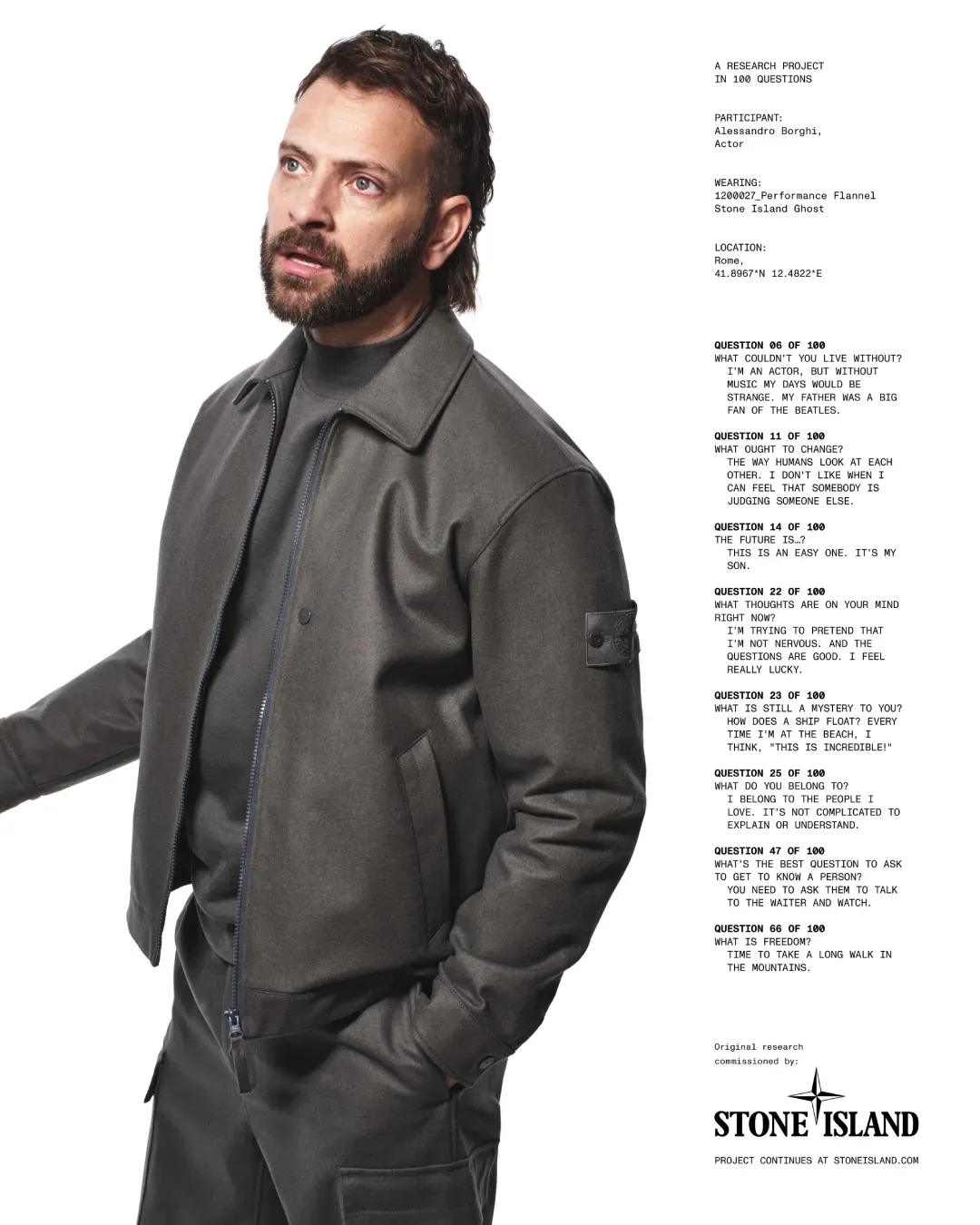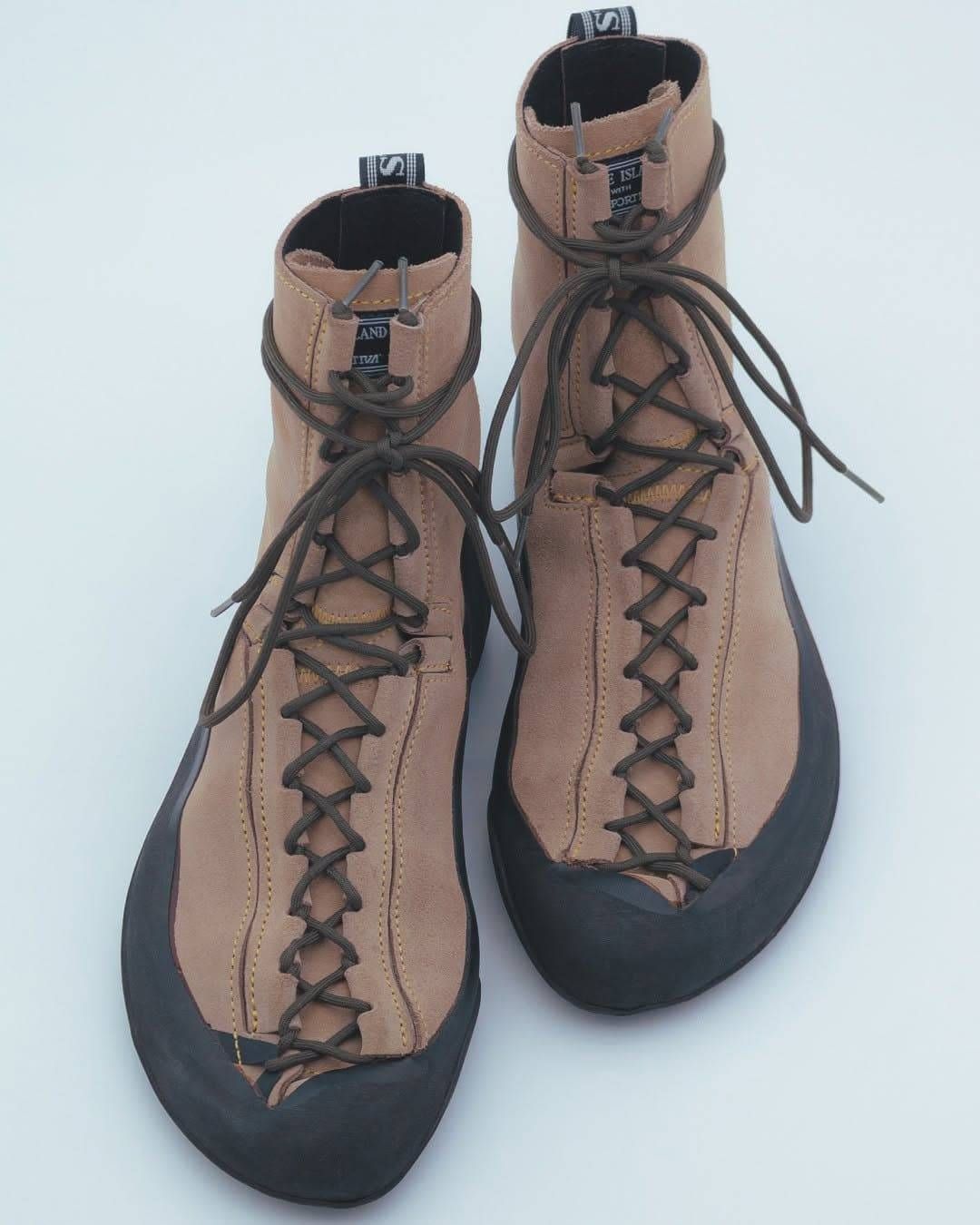
Interview with Carlo Rivetti of Stone Island An in-depth talk with the singular brand's creative director and president
Stone Island in many ways inhabits its own unique space within the world of fashion, walking the fine line between sportswear, streetwear, and haute couture with an elegant ease. They let the products do the majority of the talking for them, bringing together two seeming opposites. That of an unchanged fundamental philosophy, doing things in much the same way they always have, yet at the same time creating some of the most forward thinking and highly evolved pieces of clothing on the planet. They're an outsider, continuously going their own way with little regard to trends and hype, yet achieving exactly that, whilst retaining a wide spectrum of popularity beyond demographic and social boundaries. Stone Island isn’t just about a look, it’s as much about its technicality, its performance, and its story.
Founded by Massimo Osti in 1982, the birth of Stone Island came from a desire to push product developments into more experimental realms. From its inception, their first steps were taken in a direction that differed from brands that had preceded it. Born in essence from a mistake when a batch of discarded truck tarps ended up at the company almost by chance. They were considered to be trash, unfit for clothing production, but seeing what could be done with the unusable, a decision to wash and rewash the tarps resulted in a very particular ‘used’ stone washed look that inspired a new range and a new brand. The legendary Tela Stella fabric was born and with it Stone Island. The reference to military aesthetics was strong from the start, with the famous badge inspired by military ranks and emblems. The now iconic La Rosa dei Venti (Rose of the Wind) symbolized a love for the sea and for constant research.
Osti laid down the fundamental philosophy that echoes in its underlying ethos until this day, the desire for experimentation: To constantly push the art of fashion and textile techniques forward to new unknown territories, starting at its fundamental building blocks, the fabric. Unifying industrial processes with fashion design, Osti brought about a seminal fluency in the translating of art and garment production into a unified language that still very much lies at the core of Stone Island. In 1983 Carlo Rivetti met Osti and brought with him a vision and expertise that would truly initiate and fuel the blooming of Stone Island, taking over and running it completely as creative director and CEO in 1993. Rivetti ushered in Stone's golden age of evolution, pushing experimentation and innovations within fabric and garment dye techniques even further forward to the pinnacle point at which Stone Island stands today. Possessing a wealth of knowledge that in many ways can be seen as standing unrivaled in contemporary fashion. After the departure of head designer Paul Harvey in 2008, Rivetti also understood the need for diversifying and brought on a more multicultural perspective to the design team, creating a truly contemporary vision for the company.
As much a concept as a brand, Stone Island’s methodology hasn’t changed much over the years. It has fluidly adapted to the changing tides of trends, riding the waves of subculture popularity that have come to champion the brand over the decades. From the Italian Paninaro in the ’80s to the UK terrace and rave culture of the '90s and ’00s, arriving at today’s most recent infatuation from American hip-hop stars. Stone Island has continued its line of staying true to their experimental roots and to themselves, creating an aura of genuineness that has been a key in their wide felt resonance.
On the occasion of their latest Stone Island Research Series during Milan Design Week, we had the rare honor and privilege of sitting down with Carlo Rivetti to have an in-depth talk about the brands constantly innovative nature, Supreme, the future and a great many a things in between.
Interview
PD - The prototype research series is so interesting as it is very much rooted in pushing the boundaries within fashion and finding new areas of scientific developments. Do you have specific goals in mind or are the results more unforeseen, that you then think of after how to implement? In other words, does fashion guide the science or does the science guide the fashion?
CR - When we start, it really is pure experimentation, where we don’t actually know the final aspect of how it will be used. So let us put it in this way, technology is inspiring fashion, because if we then achieve something interesting, then the garment comes easily. Every time we start with the fabric and its treatment then, as I always say, it is the fabric itself that tells us how we have to use it. Sometimes we also do mistakes and that can result in something even better then what we were actually thinking.
PD - You’ve always been very wary and picky about your collaborations, choosing to collaborate only with Nike and Supreme. What’s your perspective on Supreme and the state of contemporary, more hype-driven, fashion?
CR - We have a fantastic relationship with the people at Supreme first of all, and from the beginning, the idea was really to do the collaboration only if we were happy with the end product. Which eventually we were, I think we threw away at least 40 different attempts. In the beginning, I hadn’t personally quite understood the strength of Supreme’s visibility, it is unbelievable.
Younger people are discovering Stone Island, through hype, coolness factor, but what I discovered is that the young guys also know the story, they know the past. This is very interesting because it is not only this, not only because it is Stone Island, but because it is something that they can relate to and understand.
The Supreme collaboration did help a lot in talking to a different audience, but this different audience then understands our language and, in my opinion, starts to study the story of Stone Island. This is interesting because it is not only about fashion, it’s something more, also for the younger generation.
PD - Stone Island has constantly had this intrinsic link to sub and youth cultures, curious to hear your personal perspective on all of that?
CR - I remember when we first started talking about subcultures, for me it was a positive word and something connected to the US, and I didn’t want to be just another brand arriving onto the US market. I didn’t want a shop on Madison Avenue, we didn’t want to talk to the dominating culture, so we said we wanted to talk to a different culture, which would be called subcultures. But in my opinion it is not a negative word, it is totally positive.
Over the years a lot of different cultures have arrived to us, and what I’m proud of is that we didn’t move towards them, they came to us, and we didn’t change our language, the DNA of the brand. It is fantastic to see, people from all around the world are interested in what we do.
I think it is also a very masculine approach, not only in style but also in communication. To let the garment do the talking and when we do say something, we talk only about the performance of the fabric. We don’t use adjectives, you buy a jacket that you like and this is so clear that it is understandable all over the world. When we started doing this type of talking about the contents of our pieces, it became very important, because in certain countries there is no one selling the products that know the whole story. We were thinking of it more like buying a car, there a salesman doesn’t sell you the “beauty” of the car, he sells you the performance. It’s very technical and we wanted to translate this type of language into fashion.
PD - You are also a professor, teaching at various universities, what is something central in what you are trying to impart on today's younger generation?
CR - I always try to tell them, pay attention when you start, fly high, because down the line, reality sets in and this might be the last opportunity to design something that you really like. Because if you then start working in the real world, it’s totally different. It’s interesting, I always says, it’s like producing wine, every year and every class is different. Some years the best part is small in number but very high in quality, and other years the ratio is much higher. I learn a lot looking at how they dress.
PD - I heard that Stone Island tries to incorporate 3 generations in their design team, in order to have the wealth of experience coupled with fresh perspectives, is that true?
CR - Well we have myself, in Italian, we say “vecchio panzone” the big fat guy *laughs* and yes it is true, but it's not from a demographic point of view. It is like in a kitchen, the collection must be harmonic, so we don’t do capsules inside the main collection, we're not looking towards the final customer, I think that we are totally transversal, the big effort is to have all the people in the team working together.
PD - How big is the design team now?
CR- It’s 9 people now, 3 Italians, 2 British, 1 French, 1 from Pakistan, and one that is specialized in knitwear. But what I discovered is that if you ask two different guys to make a field jacket, a Frenchman compared to an Englishman will make a different product, and a Pakistani another, because it is the culture that is different. So what is fantastic about having a team such as this, is to get all these different points of views, then the capability of the company is to melt them all together.
Knitwear is the sector of the fashion industry in which innovation and technology every season is important. So we have to carefully follow the developments of technology. There is a way in which everyone needs to adapt, we start with the pockets, as pockets are so important and I enjoy these developments a lot.
PD - Do you still sign off on every single garment?
CR - Yes or sometimes there are pieces that come from previous seasons without changing, but if there is a change they will come to me to approve it. Then another very important point for us is when we decided on a general color count. This is really important, and I learn so much from working with different people because the color of the Mediterranean sea is different from the color of the north sea. So for example when working on Spring/Summer, British people feel that summer colors are something different then from Italians that have this weather.
PD - How does the Shadow Project line compare to the mainline in your opinion?
CR- The Shadow line is my Formula 1, where we can really investigate new things. The Research Series is really hand made, the first step, 100 pieces made. The philosophy we have for Shadow is close, but a bit more industrialized. For instance, the last knitwear we did for the main line, was transformed from something we developed in Shadow. I always say, Ferrari cars, they started having the changing of the gears on the steering wheel in Formula 1, and now you find that in your car. You have to test, and on Shadow we test. Every season we sit down with Errolson Hugh, and ask what do we do? And we start from scratch, well it's not totally true, because as I say, nature evolves and doesn’t jump.
PD - I'm curious about the creative process with Hugh, does he get to do what he wants or is it more of a symbiosis together with Stone Island.
CR- Shadow is free, the only limit is the industrialization and again this company is magical because the word impossible doesn’t exist here. We try harder and will always find a way to solve a problem. Or if it is not possible, it is not possible, but perhaps it will be two years later. Because we never stop researching and this is interesting because usually, novelties are something people are afraid of, but not in my company. They need novelty and they want novelty, and there are not too many companies doing innovation, because innovation is risky. To me, that is a competitive advantage.
PD - Can you give us any hints as to what is coming up in the rest of the year?
CR - What's unbelievable is that the most experimental pieces are always the last to arrive. We are currently trying a completely new dyeing technique, which is still a big question mark, but I think that in the end, something will finally arrive. Another issue is that we know what we are researching, perhaps not 100%, but we are the only ones that know what was expected, so even if we achieve say 80% it is more than sufficient, so finally something will arrive I know. And if 80% of something arrives, then you have already done 80% of the work, then in a couple of years, you can maybe add the remaining 20% or even more. Because we now have new technology, there’s a lot of products that we couldn’t develop in the past, that we are now rethinking because perhaps with new technology we can achieve the wanted results. So we have the historical archive also for the mistakes that new technologies might be able to fix.
PD - Last question, how do you choose what jacket to wear in the morning?
CR - I wear one jacket for one season and then I change. At the moment I’m wearing an Ice Jacket from 2008. I always use old jackets, because I buy the jacket of the season, then I forget about it, then after two, three years, I pick it up again and think, ah beautiful!










































